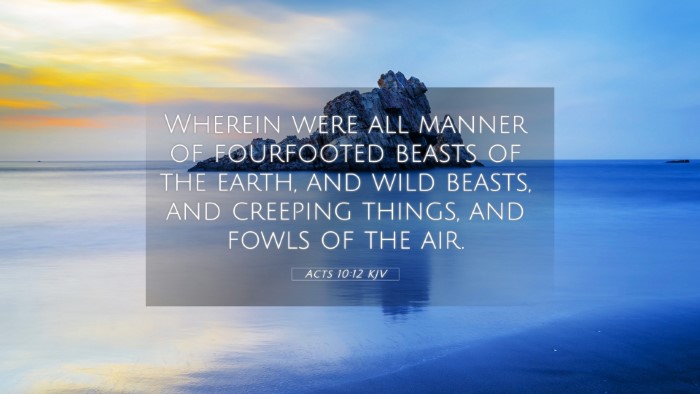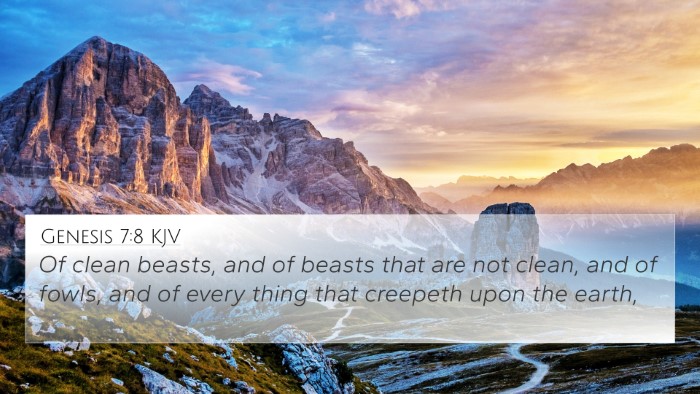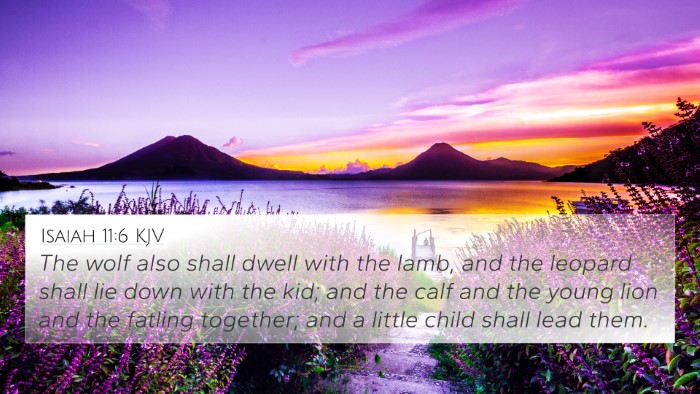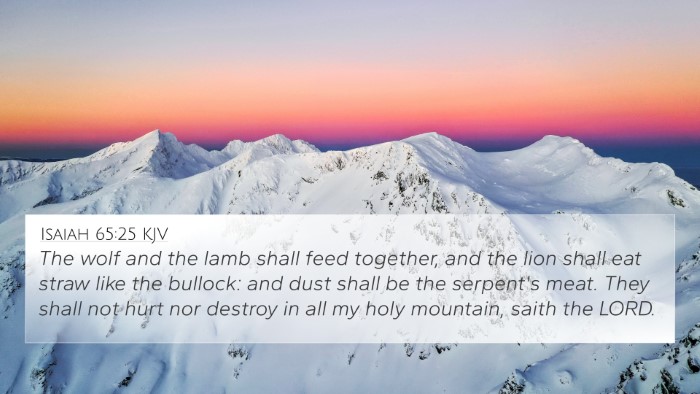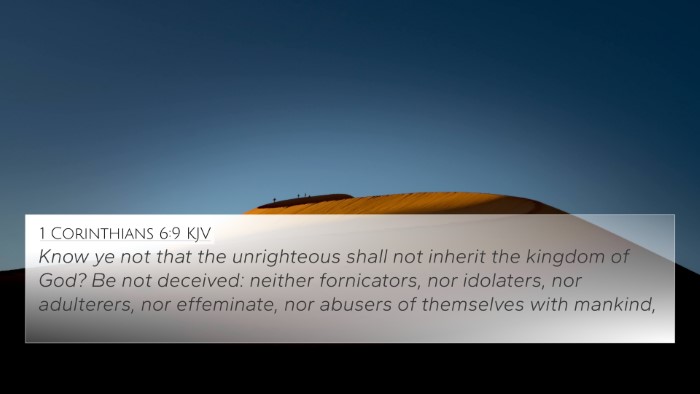Understanding Acts 10:12
Acts 10:12 states: “In it were all manner of fourfooted beasts of the earth, and wild beasts, and creeping things, and fowls of the air.” This verse occurs during a pivotal moment in the narrative of Peter's vision and the eventual acceptance of Gentiles into the Christian faith. Below we explore the meaning of this verse through insights from various public domain commentaries.
Commentary Insights
Matthew Henry's Commentary
Matthew Henry emphasizes that this vision was given to Peter to prepare him for the ministry he was to undertake among the Gentiles. He notes that the multitude of unclean animals symbolizes the Gentile nations, which were previously seen as unclean according to the Jewish law. Peter's confusion and reluctance to partake in the vision highlight the struggle of early Christians to overcome ingrained cultural boundaries.
Albert Barnes' Notes
Albert Barnes expands on the implications of the vision, stipulating that it was not just about dietary laws but a direct message from God about inclusivity and acceptance. He connects this incident with the broader theme within the New Testament of God's grace extending beyond the Jews to all humanity, thus linking the Old Testament views on food and cleanliness with the New Testament teachings of grace and redemption.
Adam Clarke's Commentary
Adam Clarke discusses the significance of the specific animals mentioned in the vision, noting their classification under Jewish law. He interprets Peter’s vision as a declaration that God’s plan includes all peoples and not just the chosen Israelites. Clarke also points out that the variety of creatures serves to signify the diverse people who would come to faith, further underlining the message of unity and acceptance among believers.
Cross-References Related to Acts 10:12
- Leviticus 11:3-7: Discusses clean and unclean animals according to the law given to Moses.
- Matthew 15:11: Jesus teaches that what goes into the mouth does not defile a person, but what comes out of the mouth is what defiles.
- Galatians 3:28: States that in Christ, there is neither Jew nor Gentile, a clear indication of inclusivity.
- Romans 10:12: Emphasizes that the Lord is rich to all who call upon Him.
- Acts 11:9: Peter recounts God's command not to call impure what He has made clean.
- John 10:16: Jesus mentions other sheep that are not of this fold, foreshadowing the acceptance of Gentiles.
- 1 Timothy 4:4-5: Paul teaches that everything created is good and should not be rejected if received with thanksgiving.
- Isaiah 56:6-7: Prophesies that foreigners who bind themselves to the Lord will be welcomed.
- Revelation 7:9: Describes a great multitude from every nation, tribe, and tongue standing before the throne of God.
Thematic Connections and Interpretations
The verse encapsulates critical themes such as:
- Inclusivity of God’s Kingdom: Acts 10:12 serves as a foundation for understanding that God's offer of salvation extends beyond ethnic and cultural boundaries, linking it to the teachings of Jesus and the subsequent apostolic mission.
- Grace Over Law: The transition from the Old Covenant, which had strict dietary restrictions, to the New Covenant where grace abounds is a significant theme throughout the New Testament.
- Transformation of Understanding: Peter’s vision portrays personal and communal transformation in understanding God's will, crucial for new believers.
- The Role of Revelation: This passage illustrates how God communicates His will to His servants, paving the way for them to act according to His purpose.
Conclusion
Acts 10:12 is a defining moment in the early church's understanding of God's nature and His plan of salvation for all people. By examining this verse through the lenses of various commentaries and cross-referencing with other biblical texts, we gain a richer understanding of its implications for both the first-century church and contemporary Christians today. The inter-Biblical dialogue initiated by this passage underscores the unified message of grace and acceptance found throughout scripture.
Further Study and Resources
For those interested in exploring the connections between Bible verses further, engaging in a cross-reference Bible study can reveal remarkable insights into how scripture interprets scripture.
Consider utilizing a Bible concordance or a cross-reference guide to enhance your understanding of themes and connections within the Bible.

